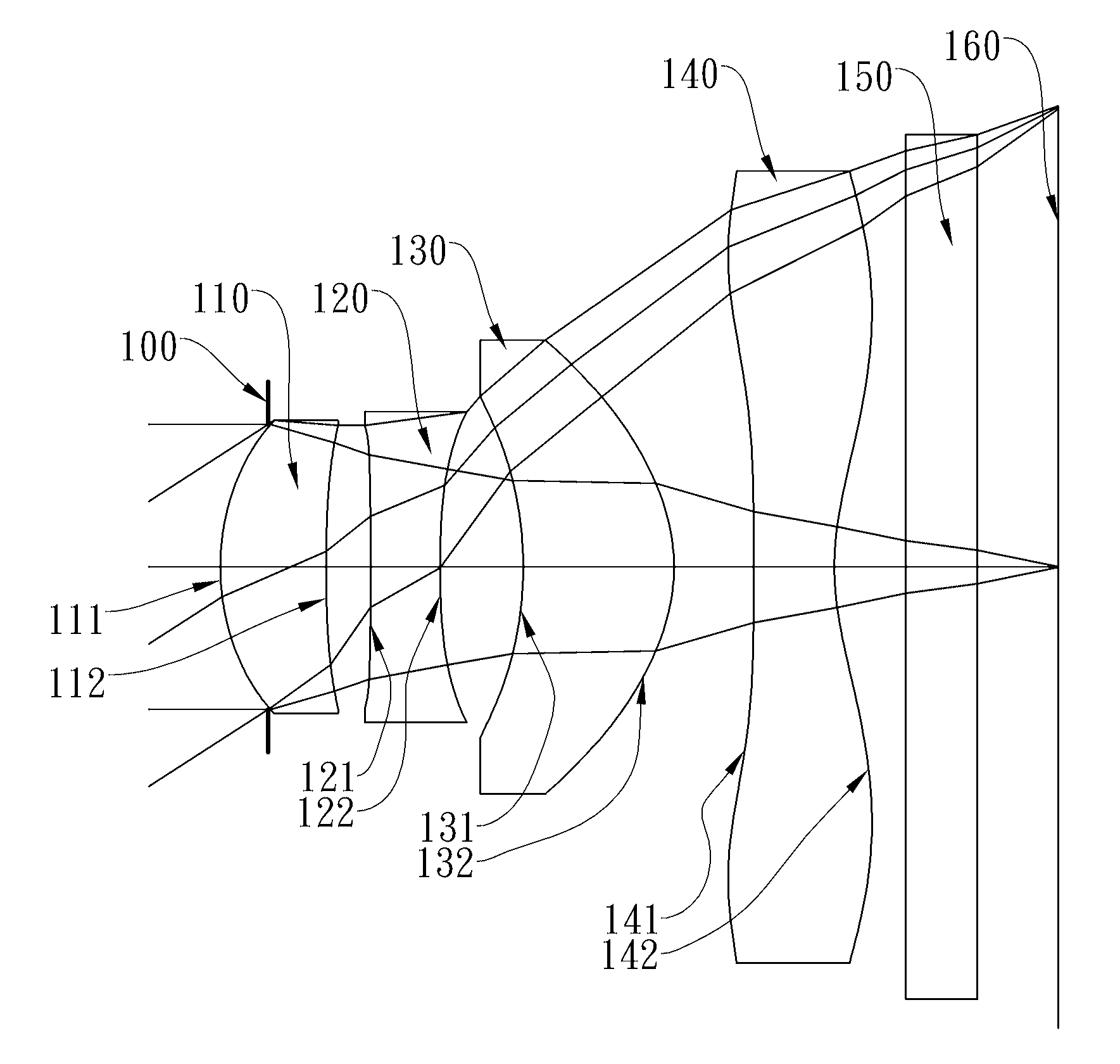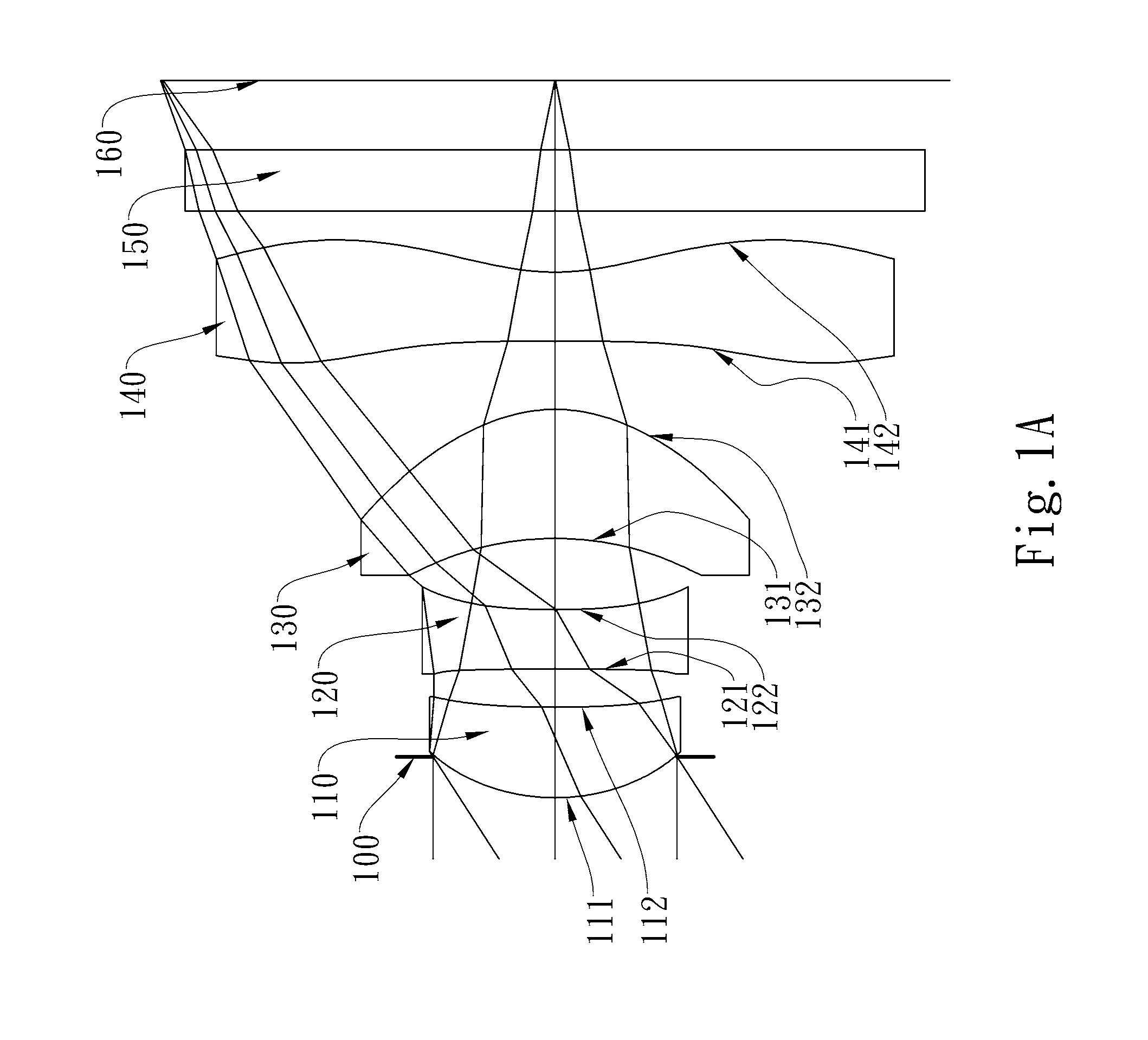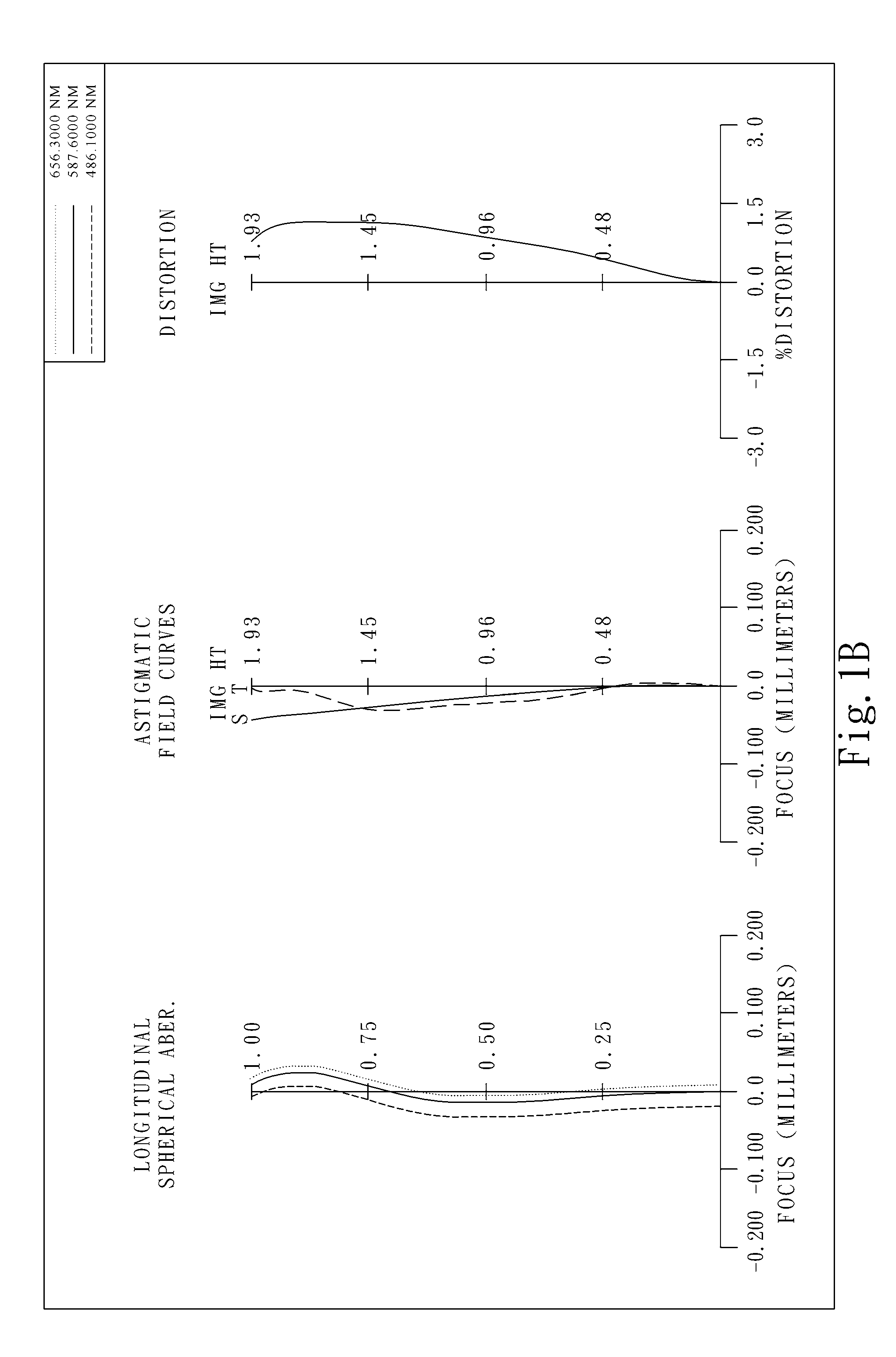Photographing optical system
a technology of optical system and photograph, applied in the field of compact photographing optical system, can solve the problems of increasing the size of the pixel of the sensor, the inability to the conventional lens system with three lens elements can no longer meet the photographing optical system of even higher level, so as to reduce the total track length and reduce the photosensitivity of the photographing optical system. , the effect of high image resolution
- Summary
- Abstract
- Description
- Claims
- Application Information
AI Technical Summary
Benefits of technology
Problems solved by technology
Method used
Image
Examples
first embodiment
[0071]Please refer to FIG. 23, which shows the distance and relative positions represented by SAG41max, SAG42max, Yp41 and Yp42 of the present photographing optical system. FIG. 23 is an enlarged drawing of a fourth lens element of the present invention (which will be described in more details below). A maximal distance between an on-axis site 2302 on which the object-side surface 141 of the fourth lens element 140 projects and an on-axis vertex 2301 of the object-side surface 141 is SAG41max, a maximal distance between an on-axis site 2304 on which the image-side surface 142 of the fourth lens element 140 projects and an on-axis vertex 2303 of the image-side surface 142 is SAG42max. A height between an optical axis and a site 2305 on the object-side surface 141 of the fourth lens element 140 which has a maximal distance between a projective image of the object-side surface 141 on the optical axis to the on-axis vertex 2301 thereof is Yp41, a height between an optical axis and a sit...
embodiment 1
[0073
[0074]FIG. 1A shows a photographing optical system in accordance with the first embodiment of the present invention, and FIG. 1B shows the aberration curves of the first embodiment of the present invention. The photographing optical system of the first embodiment of the present invention mainly comprises four lens elements, in order from an object side to an image side:
[0075]a plastic first lens element 110 with positive refractive power having a convex object-side surface 111 and a concave image-side surface 112, the object-side and image-side surfaces 111 and 112 thereof being aspheric;
[0076]a plastic second lens element 120 with negative refractive power having a concave object-side surface 121 and a concave image-side surface 122, the object-side and image-side surfaces 121 and 122 thereof being aspheric;
[0077]a plastic third lens element 130 with positive refractive power having a concave object-side surface 131 and a convex image-side surface 132, the object-side and imag...
embodiment 2
[0105
[0106]FIG. 2A shows a photographing optical system in accordance with the second embodiment of the present invention, and FIG. 2B shows the aberration curves of the second embodiment of the present invention. The photographing optical system of the second embodiment of the present invention mainly comprises four lens elements, in order from an object side to an image side:
[0107]a plastic first lens element 210 with positive refractive power having a convex object-side surface 211 and a concave image-side surface 212, the object-side and image-side surfaces 211 and 212 thereof being aspheric;
[0108]a plastic second lens element 220 with negative refractive power having a concave object-side surface 221 and a concave image-side surface 222, the object-side and image-side surfaces 221 and 222 thereof being aspheric;
[0109]a plastic third lens element 230 with positive refractive power having a concave object-side surface 231 and a convex image-side surface 232, the object-side and i...
PUM
 Login to View More
Login to View More Abstract
Description
Claims
Application Information
 Login to View More
Login to View More - R&D
- Intellectual Property
- Life Sciences
- Materials
- Tech Scout
- Unparalleled Data Quality
- Higher Quality Content
- 60% Fewer Hallucinations
Browse by: Latest US Patents, China's latest patents, Technical Efficacy Thesaurus, Application Domain, Technology Topic, Popular Technical Reports.
© 2025 PatSnap. All rights reserved.Legal|Privacy policy|Modern Slavery Act Transparency Statement|Sitemap|About US| Contact US: help@patsnap.com



